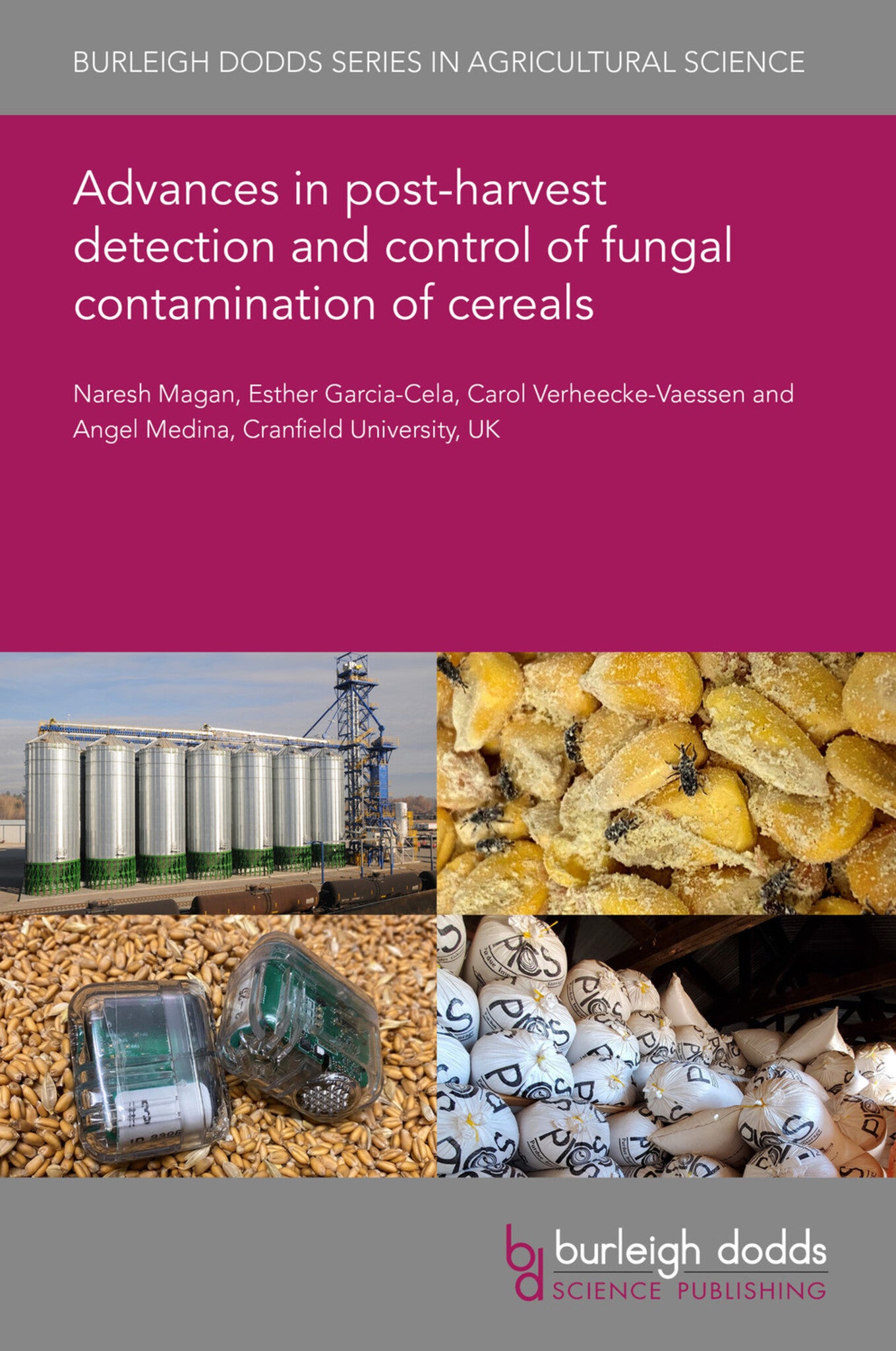We're sorry. An error has occurred
Please cancel or retry.
Advances in post-harvest detection and control of fungal contamination of cereals

Some error occured while loading the Quick View. Please close the Quick View and try reloading the page.
Couldn't load pickup availability
- Format:
-
24 August 2020


TECHNOLOGY & ENGINEERING / Agriculture / Agronomy / Crop Science, Agronomy and crop production, TECHNOLOGY & ENGINEERING / Agriculture / Sustainable Agriculture, Sustainable agriculture

1 Introduction 2 Factors affecting the activity of spoilage moulds and mycotoxin contamination 3 Volatiles as an early indicator of spoilage of stored cereals 4 Carbon dioxide monitoring for real-time identification of the risk of spoilage moulds and mycotoxins in stored cereals 5 Control strategies to minimise spoilage and mycotoxin contamination of stored grain: monitoring of relative humidity (RH) and temperature and the use of molecular methods 6 Control strategies: hermetic storage of grain and use of natural compounds 7 Control strategies: biological control and irradiation techniques 8 Control technologies: cold plasma technology and ozone fumigation 9 Conclusions 10 Where to look for further information 11 References



